
CRM (customer relationship management) software helps sales teams efficiently manage and track their interactions with prospects and customers. An effective CRM allows a sales team to have a single, centralized view of all customer data and activity, which can help them identify sales trends and patterns, prioritize leads, and stay organized. It can also help sales teams automate and streamline their processes, such as by setting up automated emails or alerts for follow-up tasks.
Here are some initial questions to ask while considering different CRM systems:
- What features are most important to the team? (e.g. lead and opportunity management, email integration, automation, analytics, etc.)
- How will the CRM be used? (e.g. by a small sales team, a large marketing team, etc.)
- How much customization is needed? (e.g. will the team need to build custom workflows or integrations?)
- What is the budget for the CRM?
When a team understands their needs and goals, they can begin researching and comparing different CRM options. This article outlines the pros and cons of the top five CRMs: Salesforce, HubSpot, Pipeline, Microsoft Dynamics, and Zoho CRM. We hope this post brings you closer to making the best choice for your team.
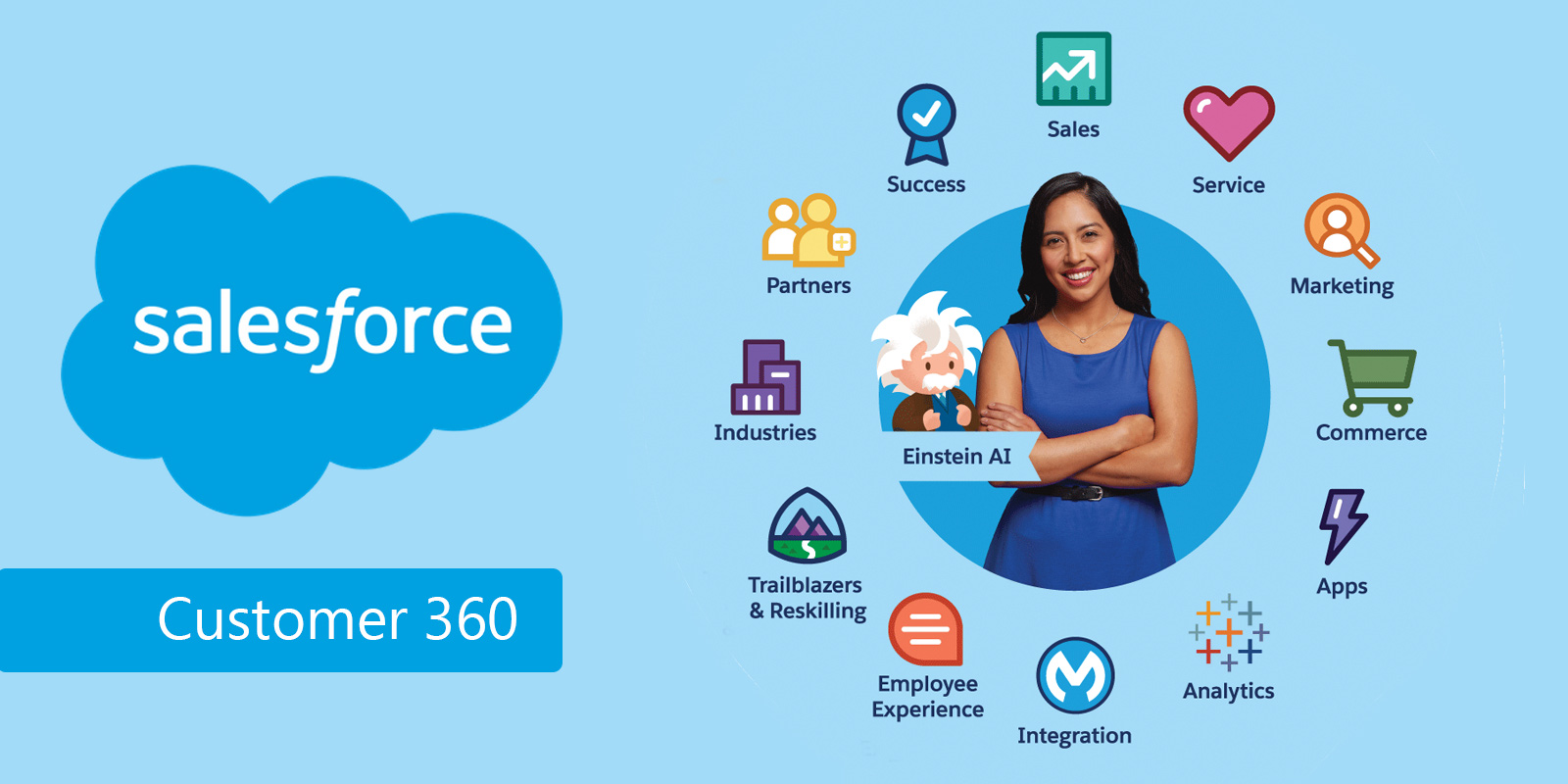
Salesforce
Salesforce is a comprehensive CRM that offers a wide range of sales and customer management tools. It is known for its robust feature set and customization options, which make it a popular choice for enterprise-level companies. It has a customer-centric approach and provides tools for customer support, marketing automation, and analytics.
A user recently provided a 4.0 rating on Gartner and explained the pros and cons. We’ve included their major points below.
Salesforce Pros
- The opportunity management features allows teams to easily view the stage, products, competitors, quotes, and other information.
- Teams can track leads from click to close while improving efforts across all channels.
- The customized dashboards provide real-time snapshots of the business.
- The Sales Cloud notifies teams about automated tasks and ensures reps won’t miss the appropriate activities at the right times.
Salesforce Cons
- Every customization, whether small or large, requires development experience.
- Users cannot customize Salesforce without an expert on their team.
Forbes recently compared HubSpot and Salesforce side-by-side and provided helpful feature lists. Most notably, HubSpot offers a free version while Salesforce costs $25/month per user. In addition, HubSpot cannot be as customized as Salesforce, yet offers a more intuitive user interface.
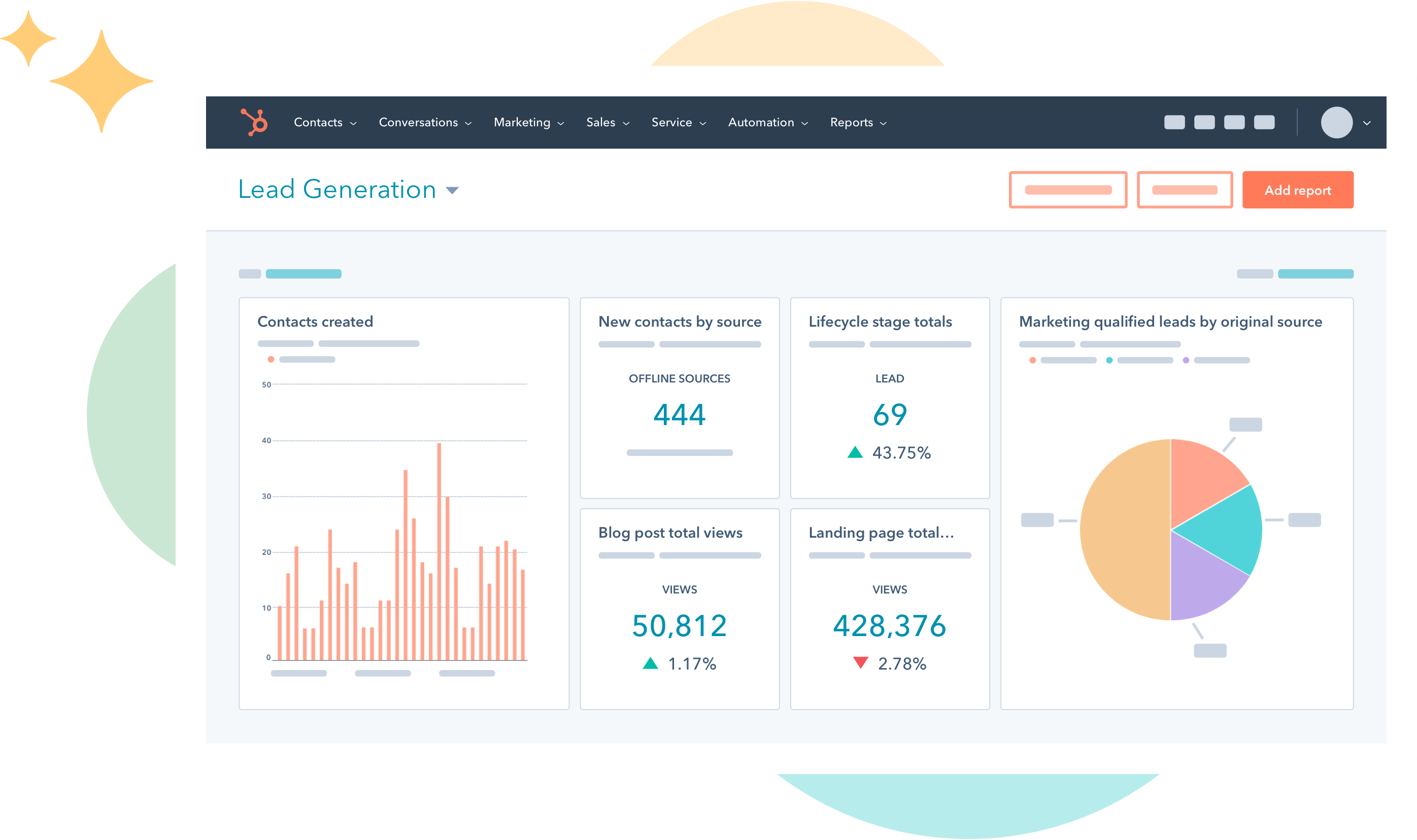
HubSpot Sales Hub CRM
HubSpot is another popular CRM that is known for its integration with other tools, such as marketing and customer service software. It offers a free version that is popular with small businesses and a paid version with more advanced features.
Sales Hub provides sales engagement tools, configure-price-quote (CPQ) functionality, and robust sales analytics for growing teams. It is built on the HubSpot CRM platform where customer data, tools, and teams come together to create a single source-of-truth for sales rep efficiency. With the full CRM platform, reps get richer insights, warmer leads, and aligned enablement material to optimize operations.
A user recently wrote a 5 star review on G2 titled Organizing Your sales process with HubSpot’s Sales Hub. Below are the key pros and cons.
HubSpot Pros
- HubSpot Sales Hub has everything teams need to generate leads and track opportunities.
- A convenient feature allows reps to view the length of time the recipient viewed each page once they opened an emailed document.
- Templates help teams maintain structure in outreach messaging.
- The tasks app makes it easy to manage a variety of tasks.
- Meetings eliminates the need for third-party applications like Calendly by providing round-robin scheduling links for group meetings.
HubSpot Cons
- Examining interactions with a contact or business is not intuitive.
- It would be helpful to add the ability to organize content by date and rearrange tabs.
- A search bar on the corporate page would help users easily find what they need.
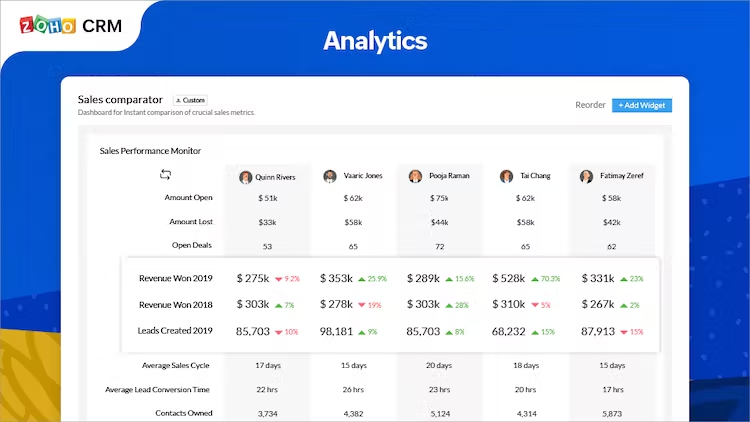
Zoho CRM
Zoho CRM is a cloud-based product that offers a range of sales and customer management tools. It is known for its affordability and has a range of plans to suit different business sizes. It also offers integrations with other Zoho apps, such as invoicing and support. Key features include contact management, sales funnels, pipeline management, workflow automation, AI-powered conversational assistant, and sales forecasting.
A recent review titled Lead Management on G2 illuminates the pros and cons of Zoho CRM, particularly for sales teams.
Zoho CRM Pros
- Zoho CRM has a predefined flow where teams can automatically assign leads to sales representatives based on location.
- There is a feature that reminds teams to follow up with leads if there has not been any communication within 3-7 days.
- An omnichannel communication system allows sales reps to connect with clients on various social media platforms.
- Different analytics reports share data on performance in different channels, including email, phone, and chat.
Zoho CRM Cons
- It’s not possible to see how many emails are going to customer spam inboxes.
- While another user wrote this con, it’s important to note that some people reported that as team needs increase, Zoho CRM’s functionality becomes complex.
Forbes offered a 2023 comparison of HubSpot and Zoho and provided a guide to help professionals decide which platform best suits their needs and budget. Forbes Advisor picks Zoho CRM as the best CRM overall for small to mid-sized businesses and notes its affordability as well as flexible features. HubSpot, however, stands out for its marketing features that come with it. HubSpot might be the better choise for teams looking for an all-in-one CRM.
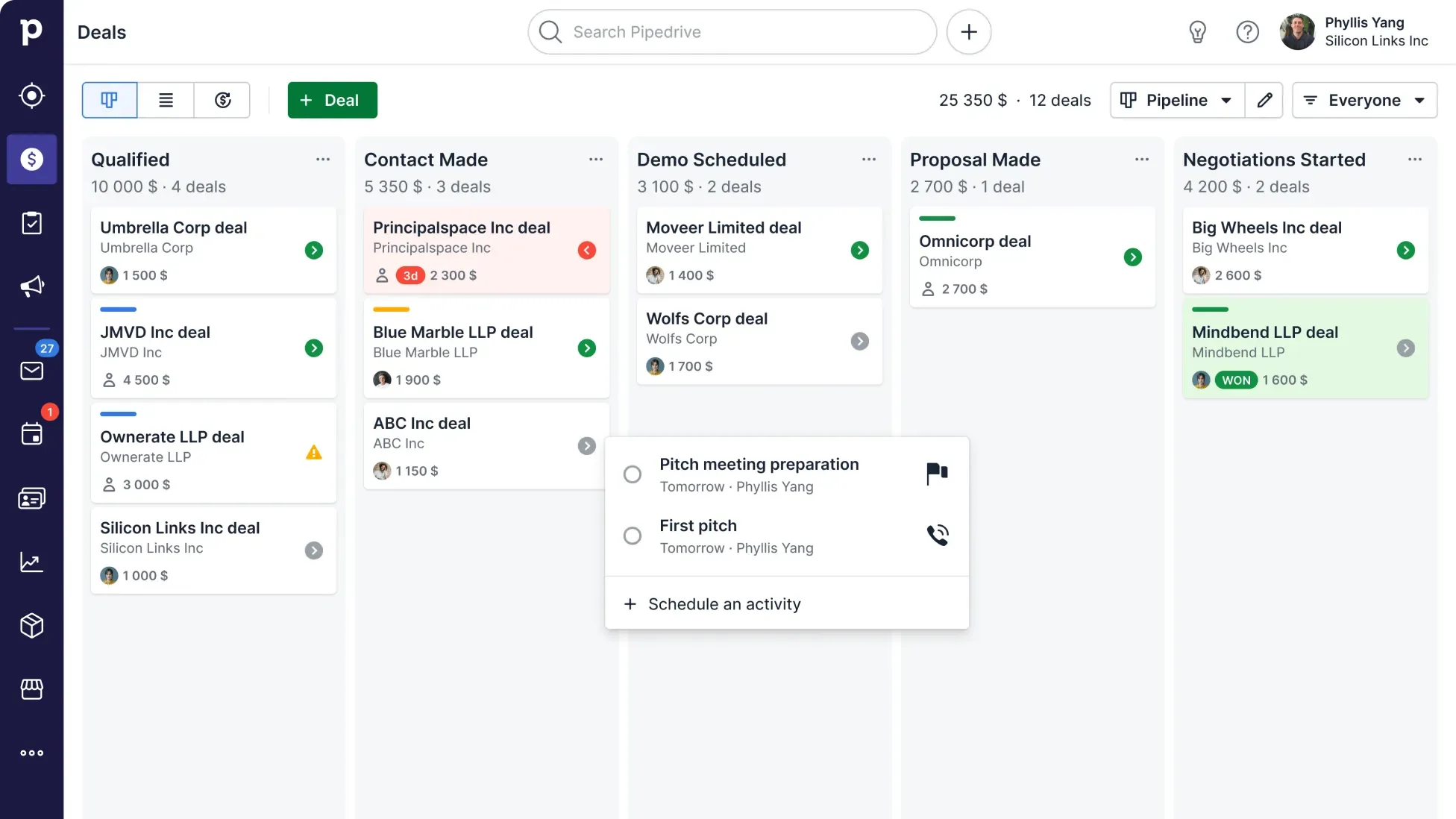
Pipedrive
Pipedrive is a sales-focused CRM that is known for its simplicity and ease of use. It is a popular choice for small businesses and offers a range of features such as email integration, sales forecasting, and lead management. Pipedrive ultimately helps teams spend less time with administrative tasks and more time selling.
A G2 review titled Streamlined pipeline management with a one-dashboard approach to sales describes the upsides and downsides of the software.
Pipedrive Pros
- Excellent front-page dashboard which prioritizes important tasks and deals
- Topnotch reporting across activities and results
- Integration with Proposify
- Excellent marketing automation
Pipedrive Cons
- Less than ideal MRR sales reporting for monthly deals
- Pipedrive is built around receiving information rather than sending it, which might cause issues with advanced integration with third party tools.
- Another user commented that the chatbot technology does not function well
Many teams will find themselves reviewing Pipedrive alongside HubSpot. Capterra provides a helpful side-by-side analysis of the two platforms. Key differences include pricing (HubSpot offers a free version while Capterra starts at $29/month) and the amount of users accommodated by each CRM.

Microsoft Dynamics 365
Microsoft Dynamics 365 is a CRM that is part of the Microsoft Dynamics suite of business applications. It offers a range of sales and customer management tools and is known for its integration with Microsoft Office products. It is suitable for small to medium-sized businesses and offers a range of pricing options.
A user provided a detailed review of the software on Gartner.
Microsoft Dynamics 365 Pros
- Microsoft Dynamics integrates well with third party applications.
- The user interface is easy and minimalistic.
- Data visualization is excellent and helps teams create effective reports.
- Provides excellent support for managing data and finding out shortcoming as well as opportunities.
- Tracking sales data and relevant historical data for effective decision making.
Microsoft Dynamics 365 Cons
- Sometimes the global search function lags which results in lost time.
- The mobile application does not work well compared to the desktop application.
Many businesses find themselves comparing Salesforce and Microsoft Dynamics 365. This Forbes article provides a more detailed assessment of each product in addition to a helpful visual.
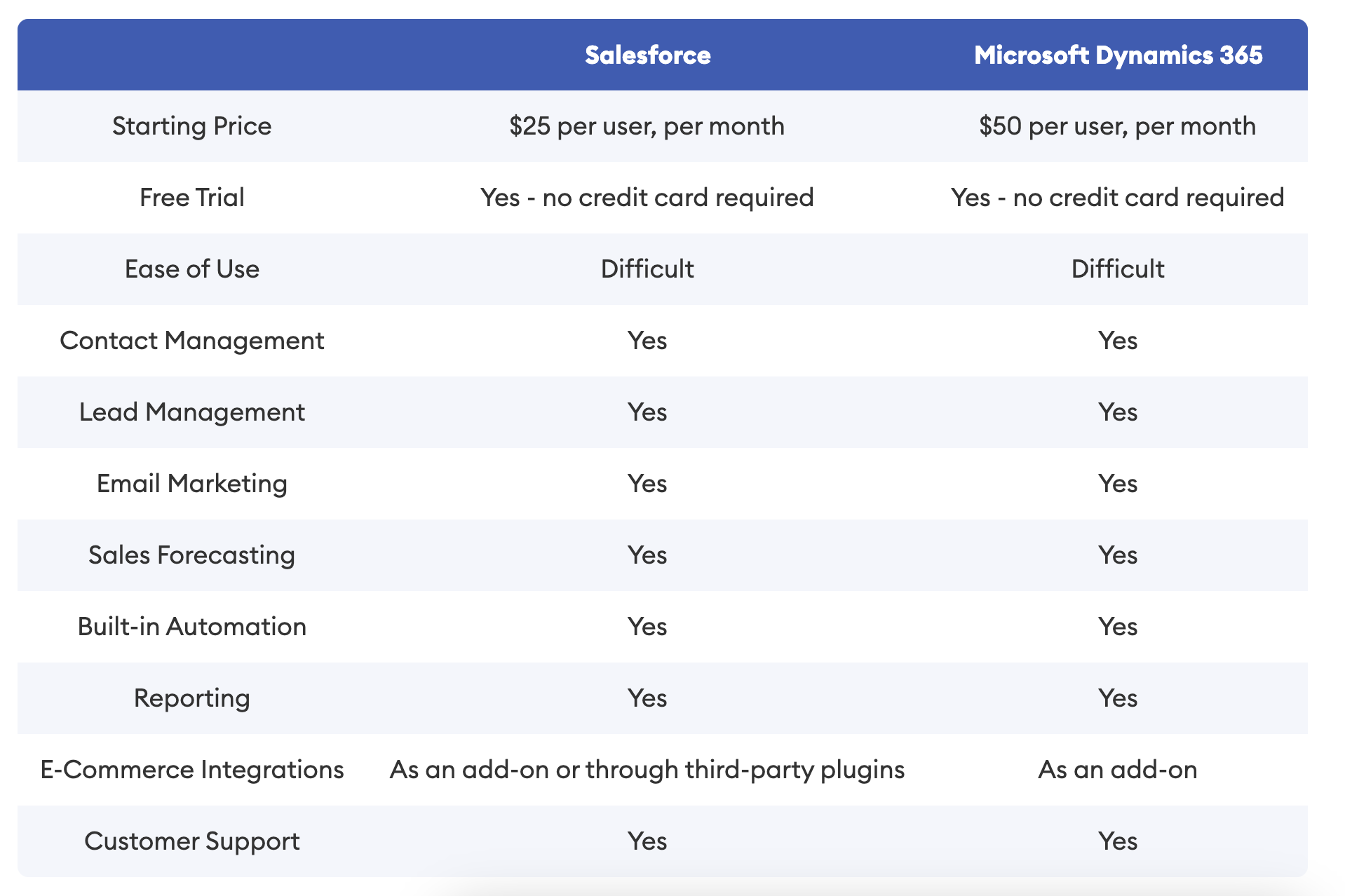
Conclusion
While one could spend months reading endless reviews and articles, it’s ultimately better to try out these different platforms. Also, teams often outgrow their CRM and need to upgrade to a different plan or simply switch platforms. This knowledge can only be acquired through experience. We hope this article provides you with helpful information and empowers you to make the best choice for your team and business.